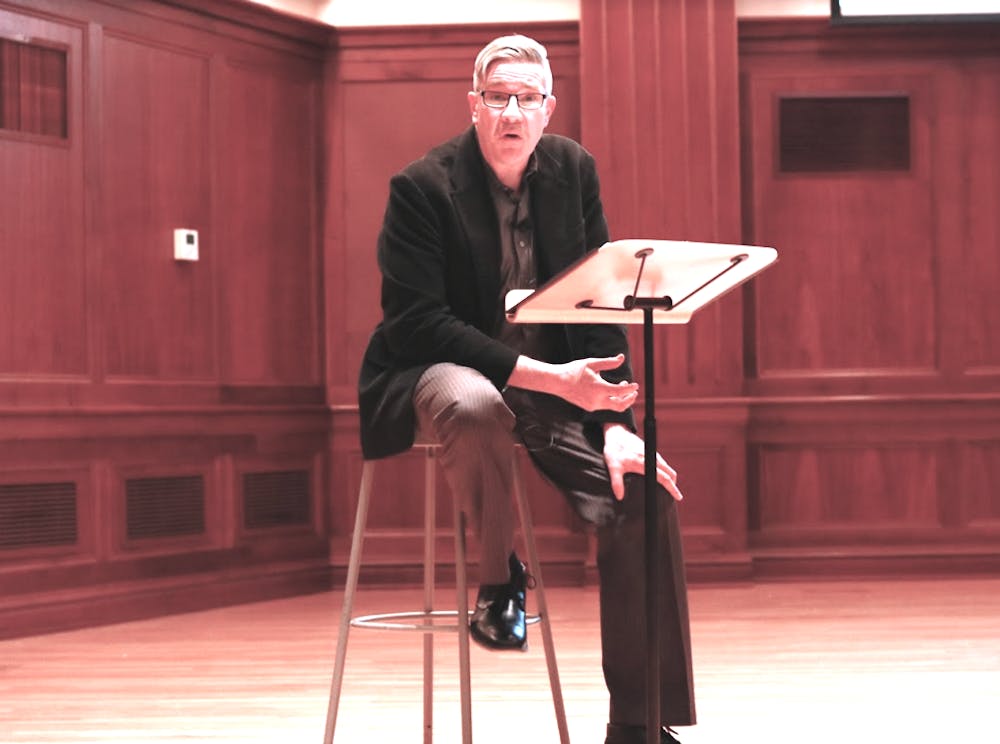By Alexandra Bonano Correspondent
In the eighth installment of the Fall 2018 Faculty Lecture Series, the School of Arts and Communication held a presentation titled, “Performance of Amy Beach’s ‘Sonata for Violin and Piano, Op. 34’ (1899).” in Mayo Concert Hall on Friday, Nov. 9.
Uli Speth, Tomoko Kanamaru and Wayne Heisler, all professors in the department of music, analyzed and shared the history of Amy Beach (1867 - 1944) and the sonata, an instrumental musical composition typically of three or four movements in contrasting forms and keys of which Beach was a pioneer in creating. The lecture ended with a full performance that allowed the audience to experience how Beach intended the sonata to be played.

Heisler compared the presentation of each of the sonata’s individual parts as a “pre-performance tour” of the grand finale. He compared the presentation to going on a double decker bus tour in New York City and Philadelphia during which you get to overview of the city’s most important sights.
According to Heisler, Beach was a female pianist and composer who possessed an astonishing musical talent since she was just 1 year old. At that young age, Beach was able to sing 40 tunes accurately and frequently in the same key. Just three years later as a 4-year-old, Beach mentally composed and performed her first piano compositions.
After composing approximately 300 works, Beach became a renowned pianist and composer across North America and Europe. Heisler said Beach’s career as a composer hit a high point in 1896 when her first and only symphony, the “Gaelic” symphony, was first performed by the Boston Symphony Orchestra. The piece went on to be played by orchestras across the nation.
Heisler explained that Beach’s success was considered astounding considering how masculinity ruled orchestras at the time.
“A gendered blind spot is also witnessed by the reception of Beach’s other major composition in 1896, the ‘Sonata for Violin and Piano,’” he said.
This gendered blind spot allowed for Beach’s works to be more successful and widely accepted than most despite the fact that she was a female composer in a time where males dominated most industries.
Throughout the presentation, Heisler displayed quotes and reviews of Beach’s work from people who had heard it during the first few years of the composition’s fame. It gave the audience an in-depth look at how her musical masterpieces were received.
“The sonata was everything from sweet and song like, to fast and with fire,” Heisler said. “It’s meant to make the audience experience a buildup in the music, with an explosive ending.”
After examining each of the four parts, formally known as movements of the “Sonata for Violin and Piano,” Speth and Kanamaru, playing the violin and piano respectively, performed each movement for the audience.
The crowd was captivated and left in awe as Speth and Kanamaru eloquently and expressively performed the sonata completely, filling the hall with their music.
When they finished, the audience cheered as Speth and Kanamaru caught their breaths after an impeccable performance.
“I liked how they gave historical context to the piece before they played it and I feel like it made me listen more critically while they were playing,” said Lorena LiMato, a senior music education major.







